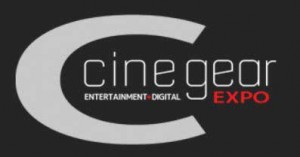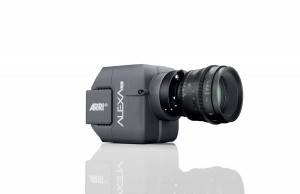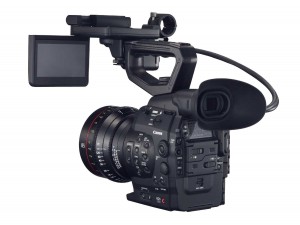![]()
 Cine Gear Expo 2012 took over Paramount Studios in Hollywood on Friday and Saturday, the second year in a row on the ample backlot. The expo, now in its 16th year, brings together vendors of motion-picture cameras and a wide variety of camera-related gear along with developers of tools related to the art and science of image making. Some 200 exhibitors showed off their latest movie and television production equipment, and there were nearly 2,000 attendees.
Cine Gear Expo 2012 took over Paramount Studios in Hollywood on Friday and Saturday, the second year in a row on the ample backlot. The expo, now in its 16th year, brings together vendors of motion-picture cameras and a wide variety of camera-related gear along with developers of tools related to the art and science of image making. Some 200 exhibitors showed off their latest movie and television production equipment, and there were nearly 2,000 attendees.
But despite the profusion of nifty new gear on display, changes were more evolutionary than revolutionary.
Digital cameras continued to occupy center stage, as they have in recent years, with the emphasis on 4K image capture capabilities. Arri, Canon and Sony all had new cameras on display. Price points are receding, which will allow more indie film productions to utilize digital capture.
The latest iteration of Arri’s popular Alexa line of digital cameras is the M, which was on view and has just started to ship. “M is for modular,” explained Jeffrey Reyes, a technical specialist for the company. “We’ve separated the sensor and the lens mount from the electronics and the capture.” The M, weighing in at less than 7 pounds, is smaller and lighter than other Alexa models and is tailored for action sequences, aerial photography, tight corner shots and 3D productions.

Canon, known for its still cameras and imaging sensors, took a deep dive into cinema with its EOS C300 cinema-capable camera introduced last November. Its successor the Canon EOS C500 was on view at the Expo. It is a professional level 4K, 120 frames per second, RAW cinema camera, weighing 3-1/2 pounds without lenses.
Set to ship by the end of the year, the C500 also pumps out 1080P, 2K and Quad HD. “This is directly targeted at theatrical filmmaking and will be our top of the line 4K,” said Tim Cook, a film and television production adviser at Canon USA. The appeal of the C500 to cinematographers is in its increased latitude, or ability to function in very low-light situations, along with improved color science. Cook believes a parity has been reached between film and digital 4K cameras, with the future weighted in favor of digital capture. “At this point, film is not going to get any better and digital is not going to get any worse,” he observed.

The C500, is set to cost around $25,000, significantly less expensive than the cameras it views as competitive in capabilities – the Arri Alexa, the Red Epic and the Sony CineAlta F65 8K camera. These three range in cost from $55,000 to $70,000. But at the Expo, Sony had on display its own bargain-priced digital camera, the NEX-FS700, a 4K-capable video camera. It is set to ship this month at a cost rumored to be below $10,000, including an 18-200 mm. lens. A highly sophisticated camcorder boasting a large sensor, the FS700 is likely to appeal to independent filmmakers working within a limited budget.
The Tiffen Company showed its new line of MPTV optical filters. The Tiffen IRND/Ultra Pol Filter, made from water white glass, combines protection from infrared light pollution with glare and reflection reduction and other characteristics of the company’s premium polarizing filters, such as dramatic sky effects.
The detailed images 4K digital photography produces sometimes reveals more than is desired, especially with regard to actors’ skin. So Tiffen is working on new diffusion filters. “With 4K the buzzword, we have to keep in mind that authentic reality and that sharpness and the hyper-realism that people want to see in because it adds to the character of the images,” said Carey Duffy of Tiffen International. “But it doesn’t always add to the character of people’s skin tone or skin texture, which can appear unreal in a not pleasing sense.” Tiffen is looking to address the need for a diffusion filter that “will work on the talent but not be so dramatic as to take away from the quality of resolution that the camera delivers to the viewing public,” he declared.
There were also two special honorees at this year’s Cine Gear Expo.
- Vilmos Zsigmond, ASC, received the Lifetime Achievement award in cinemtography. Hungarian-born, he received an Oscar for his work on Close Encounters of the Third Kind directed by Steven Spielberg. Zsigmond, has over 80 DP film credits, most notably for The Deer Hunter, McCabe and Mrs. Miller and Deliverance.
- Bob Nettman got the Cine Gear Expo 2012 Technical Lifetime Achievement award for his innovative work as a cinema equipment engineer. He developed an adaptable line of 5-axis camera and lens stabilizers for all shooting conditions.





